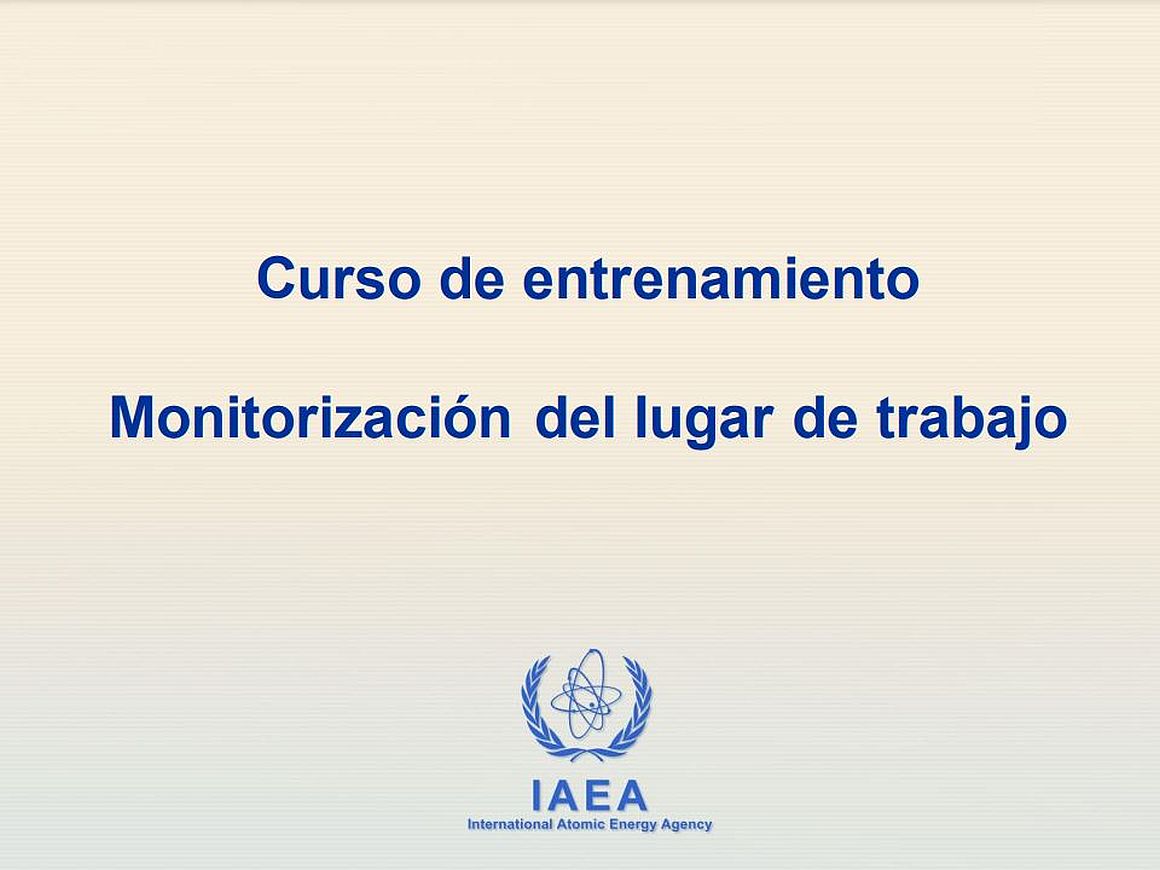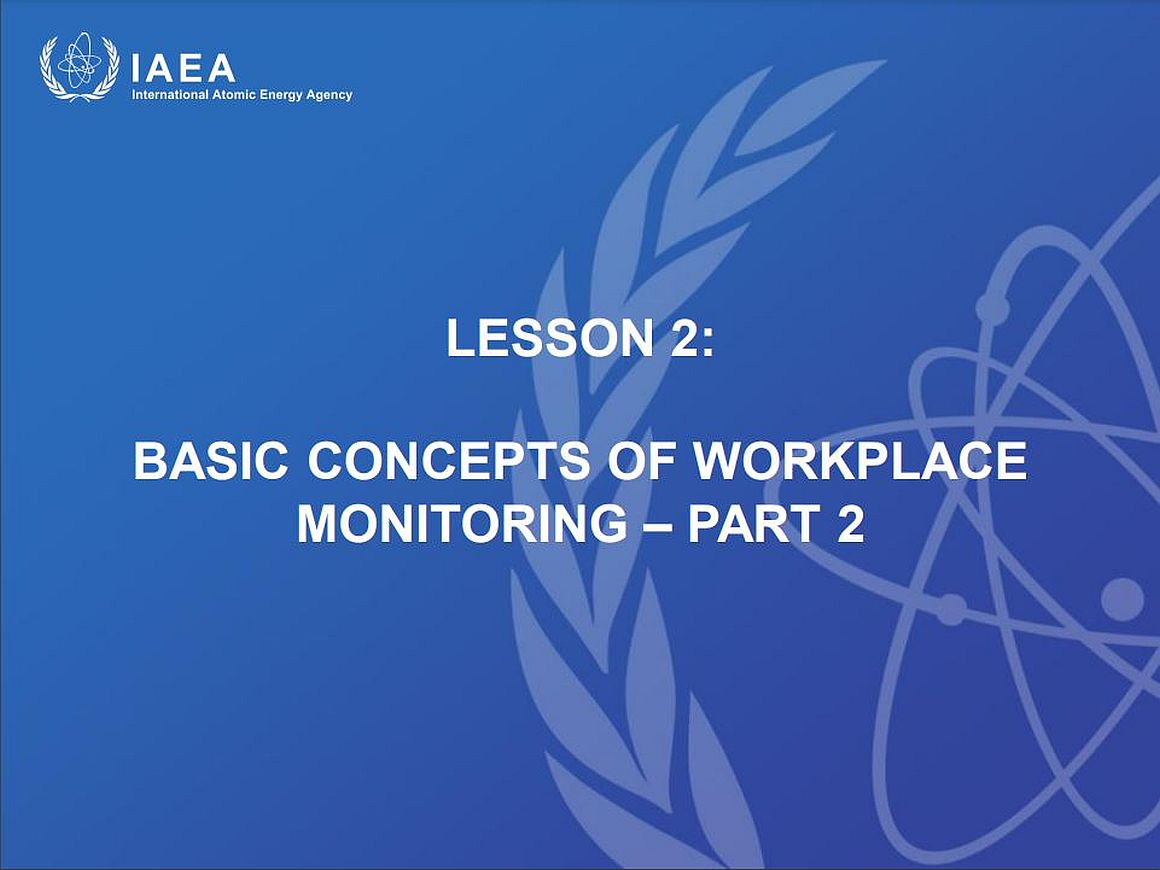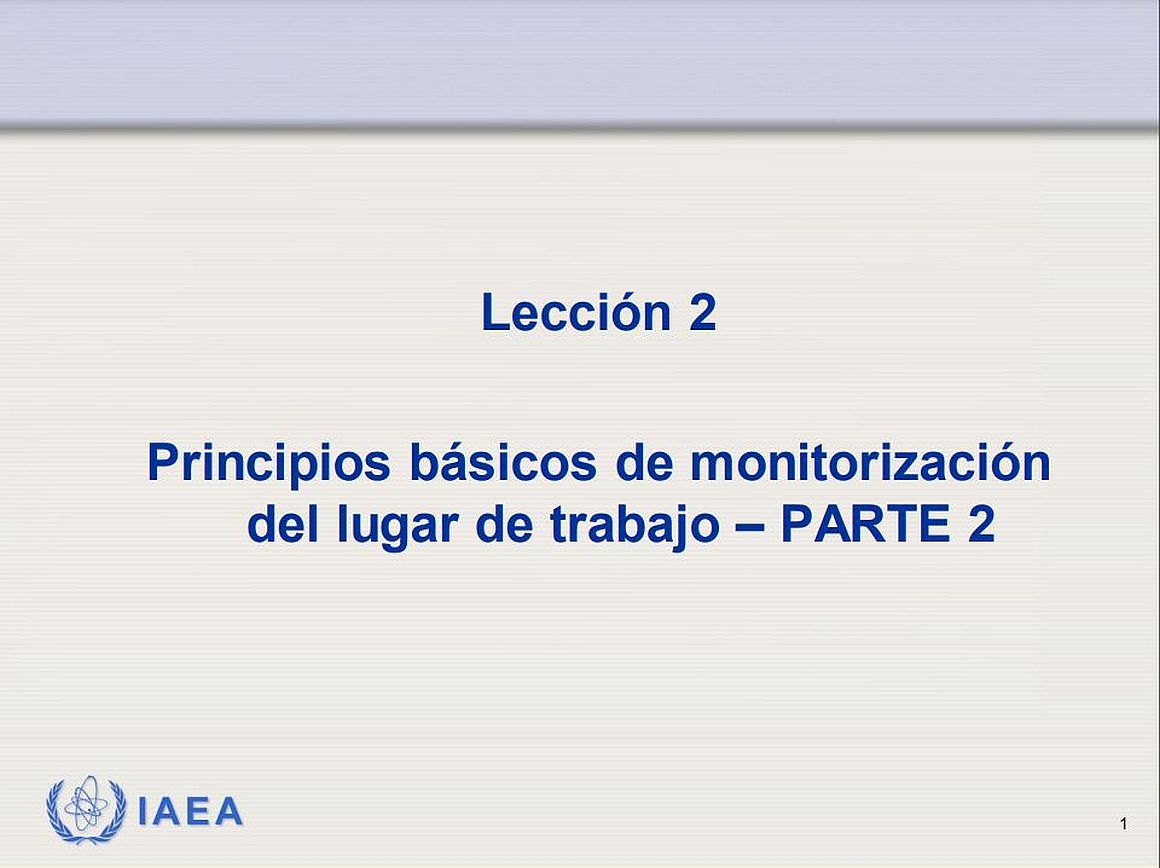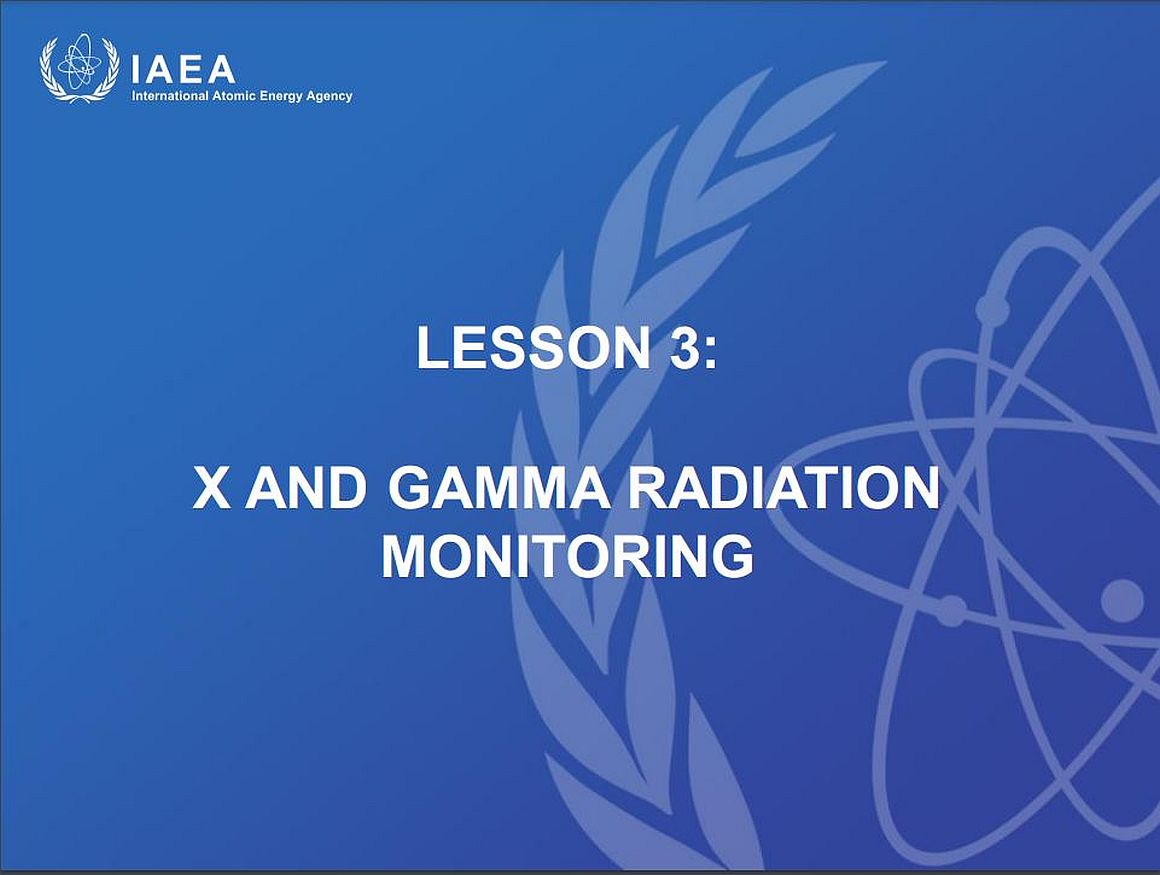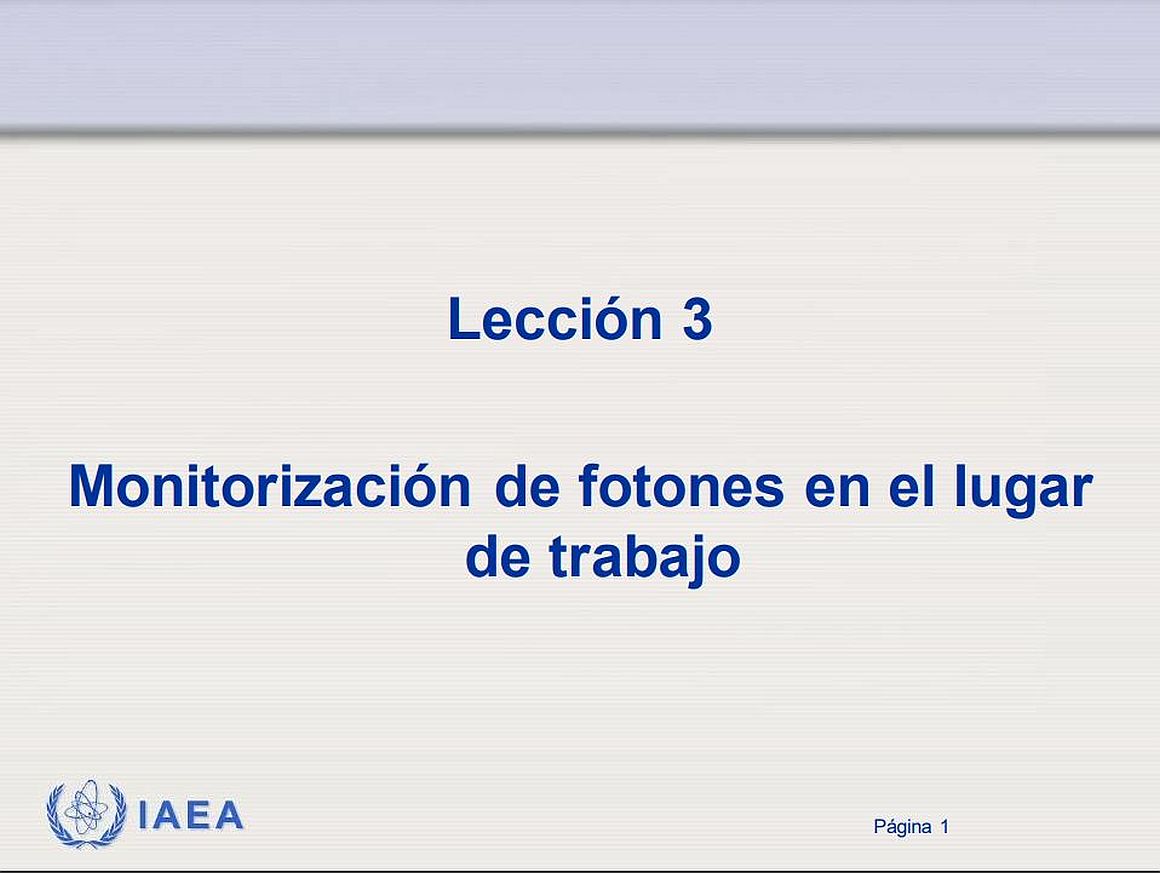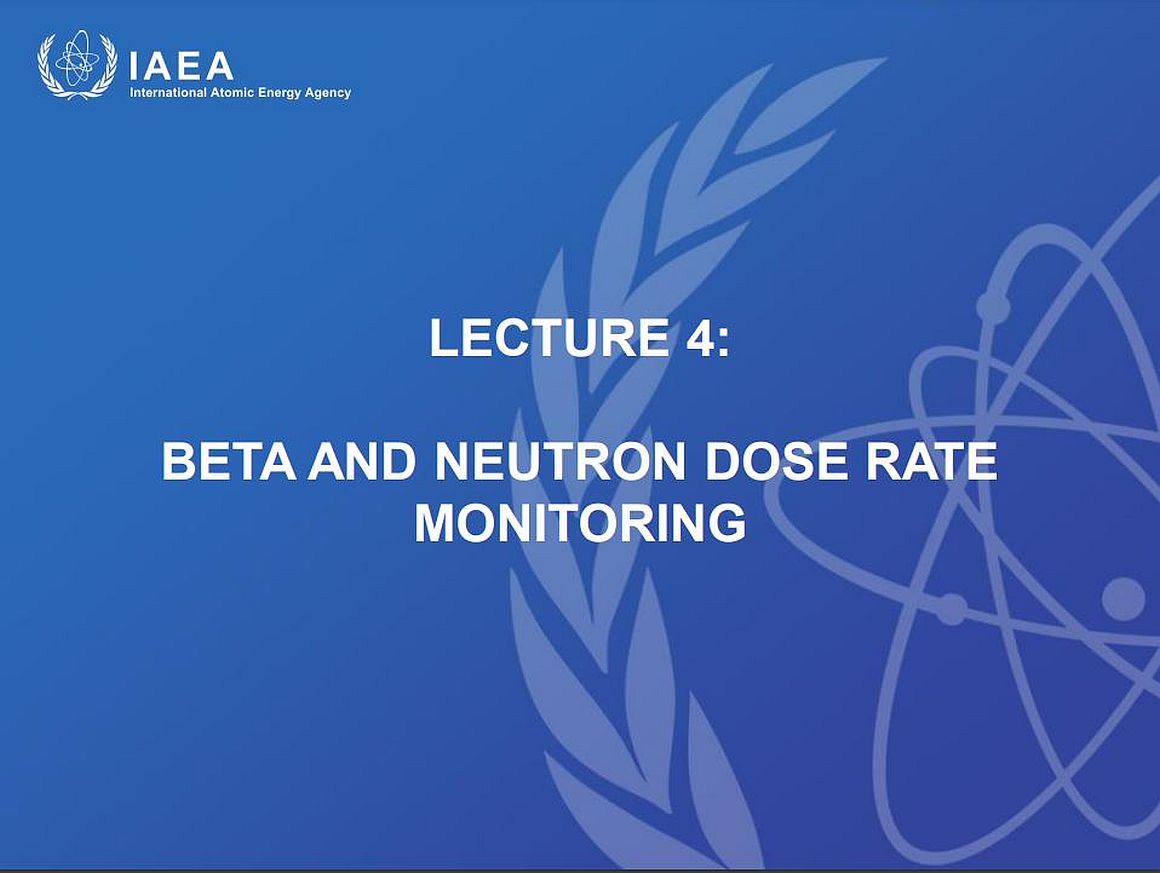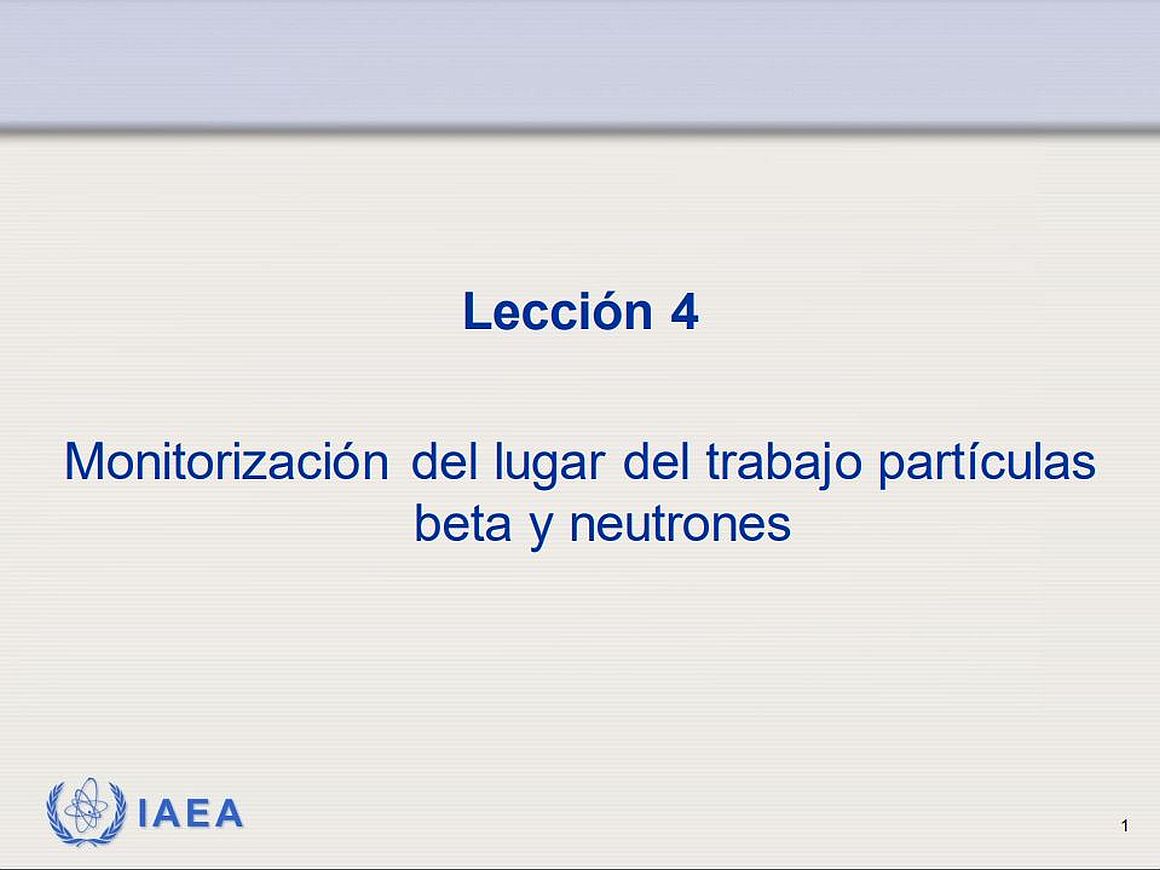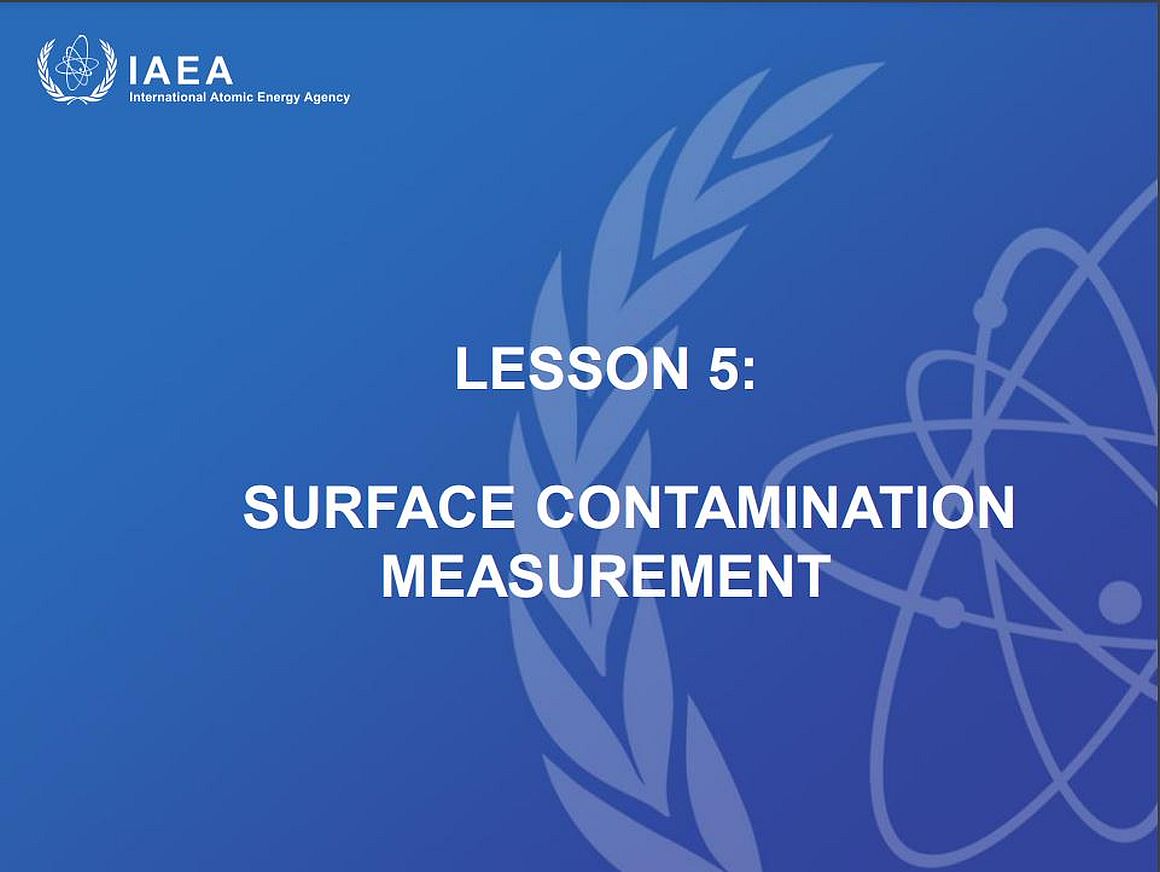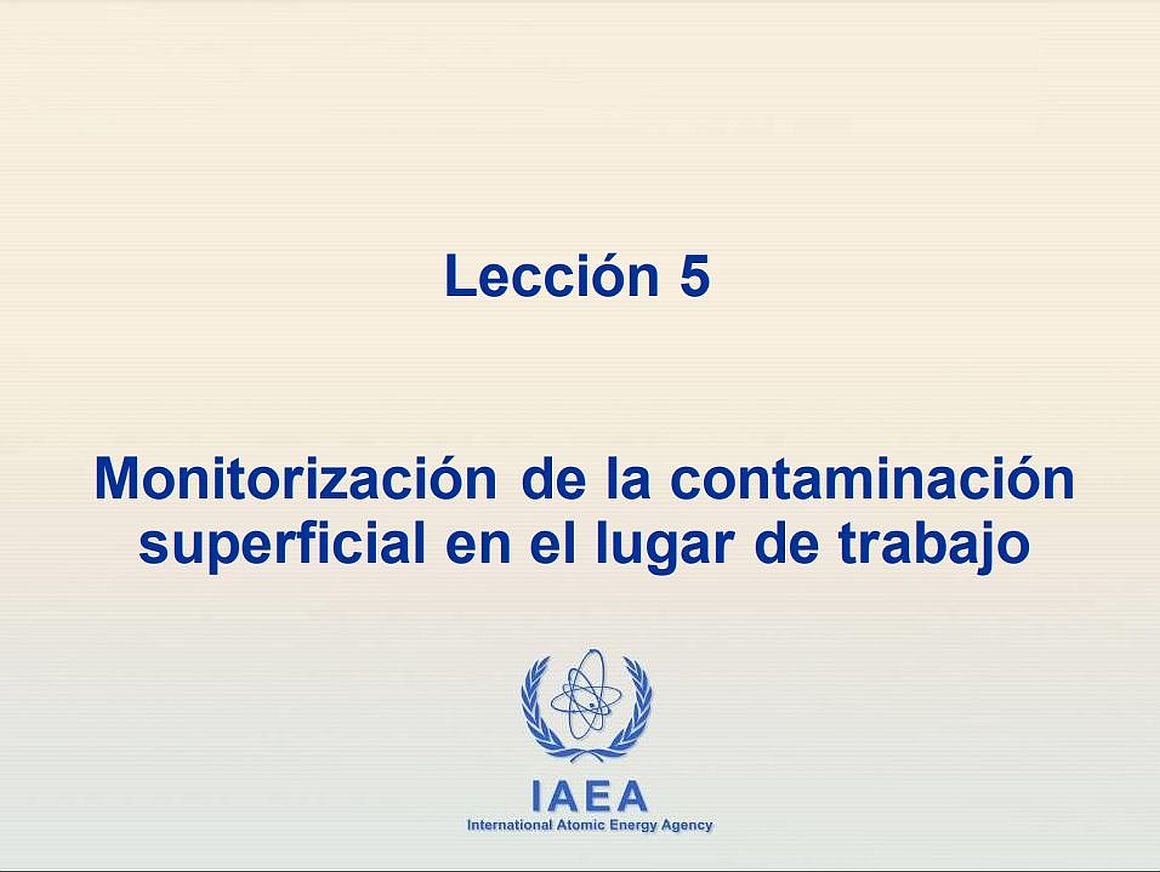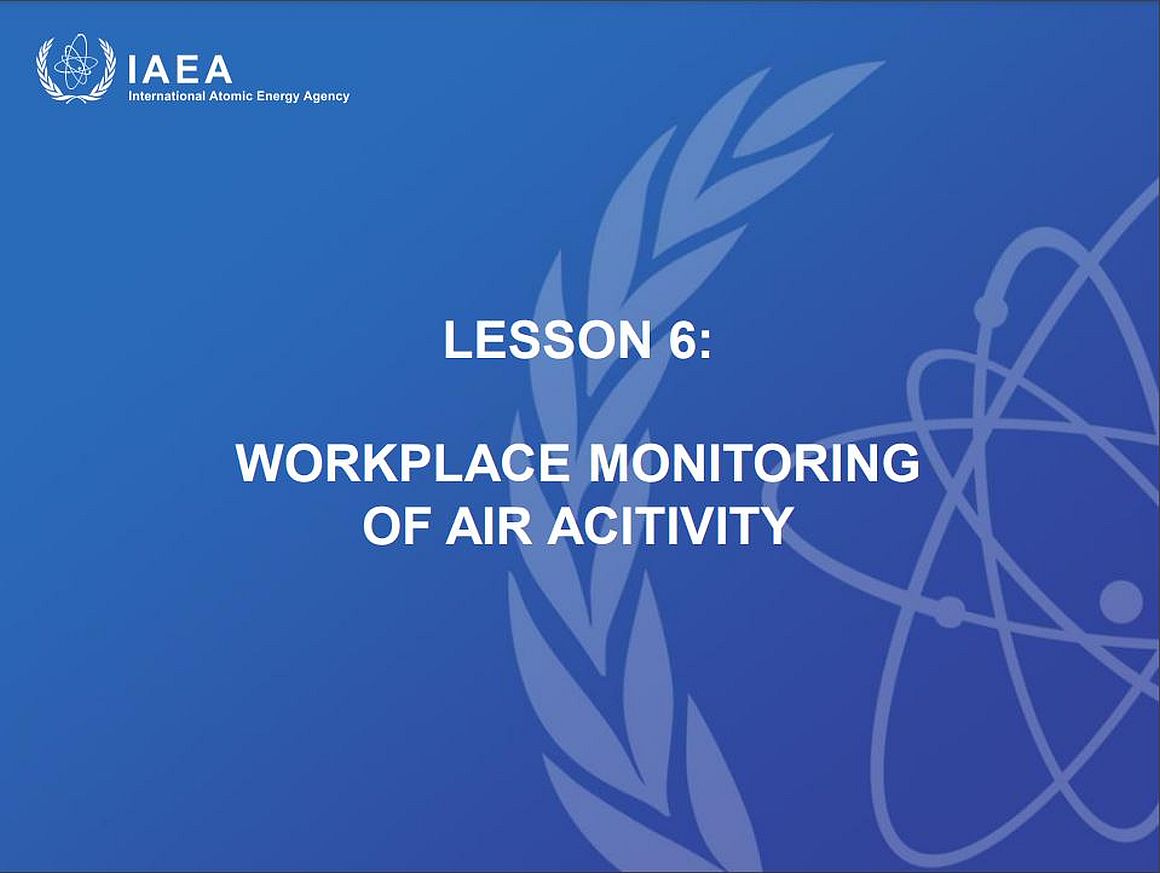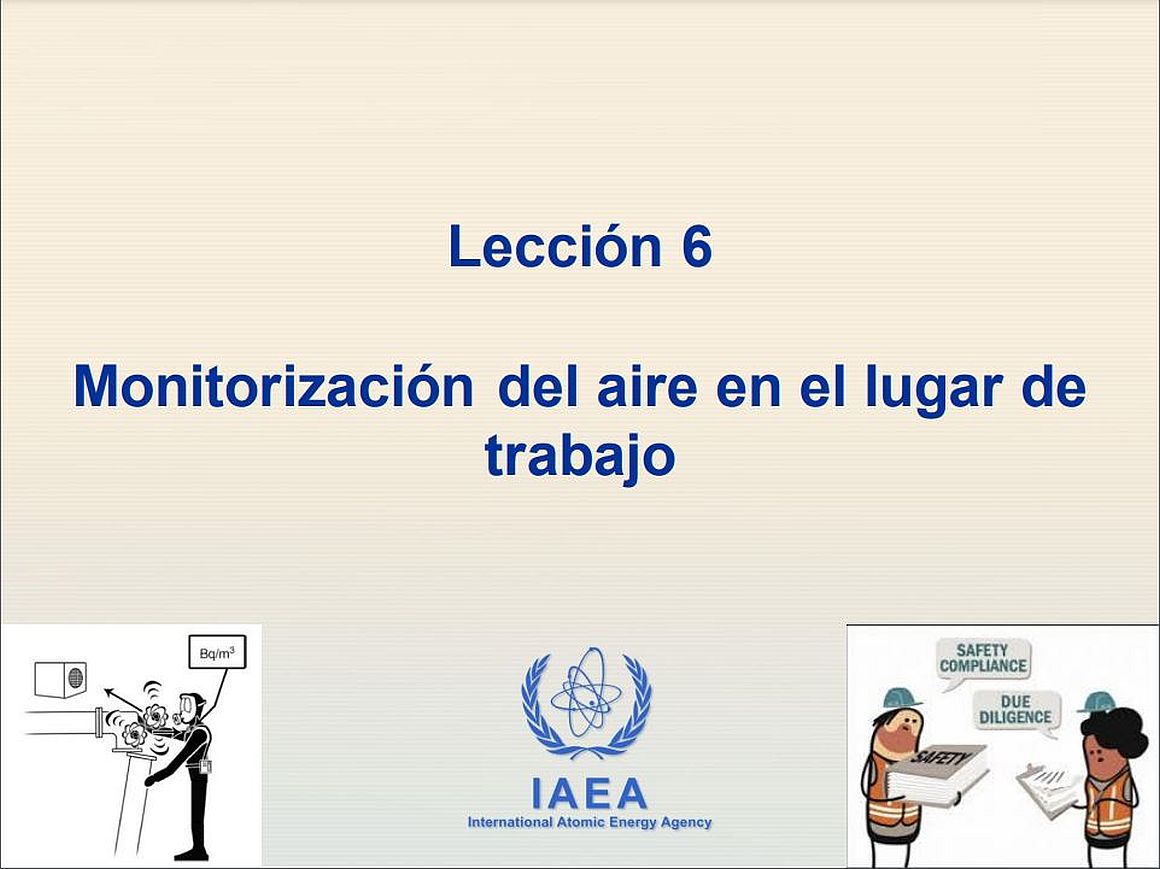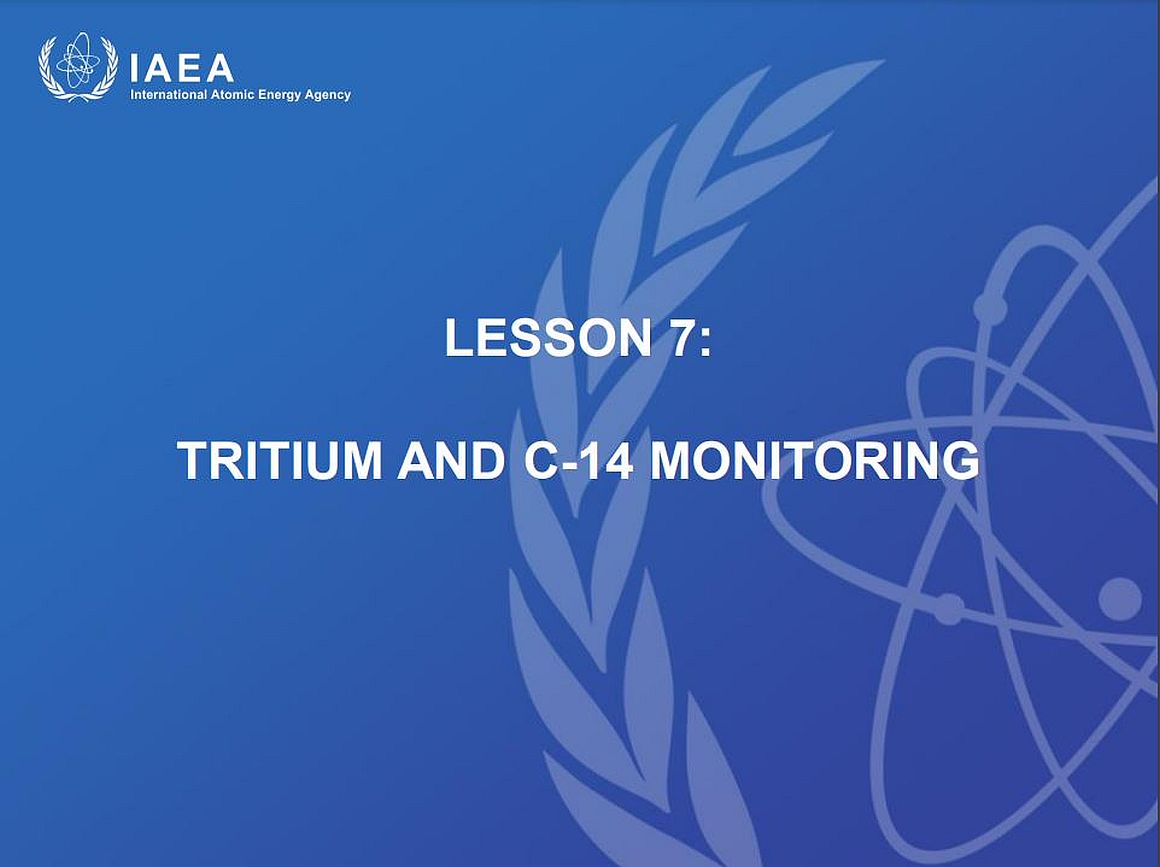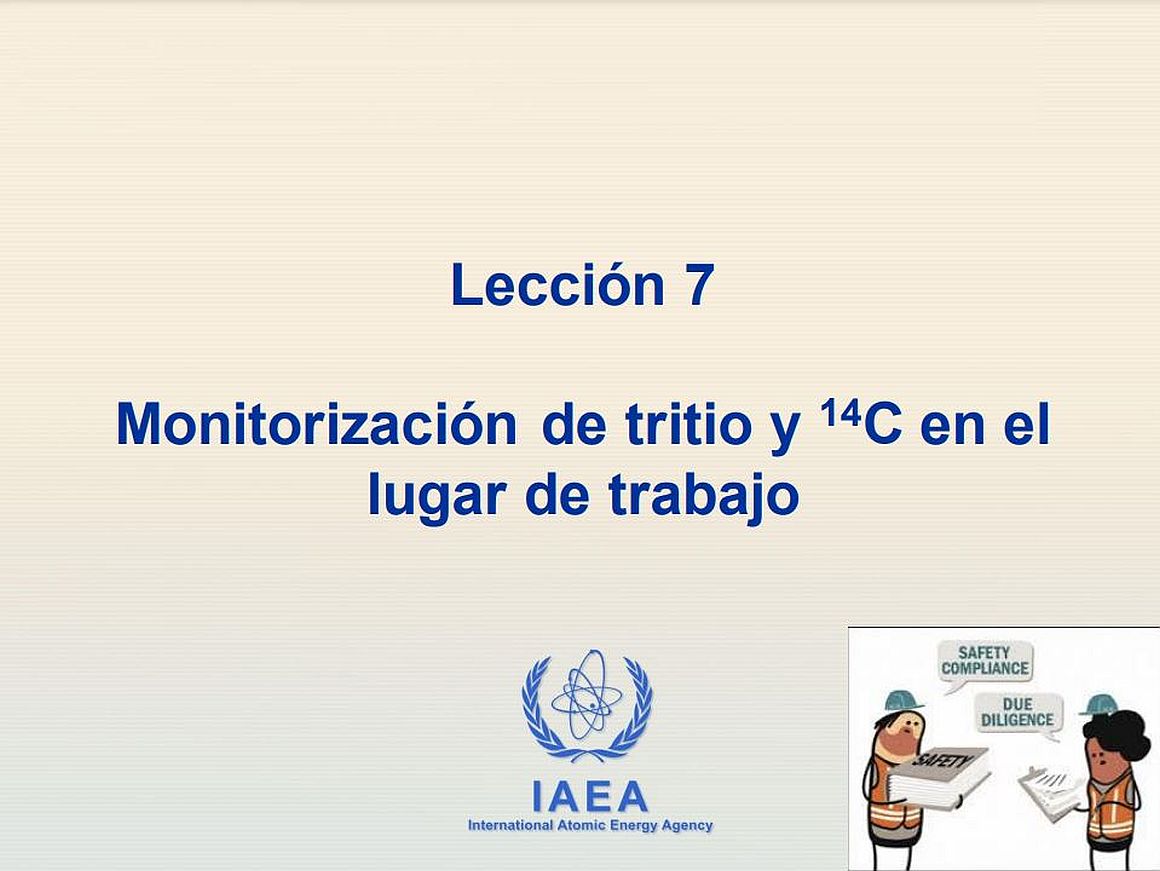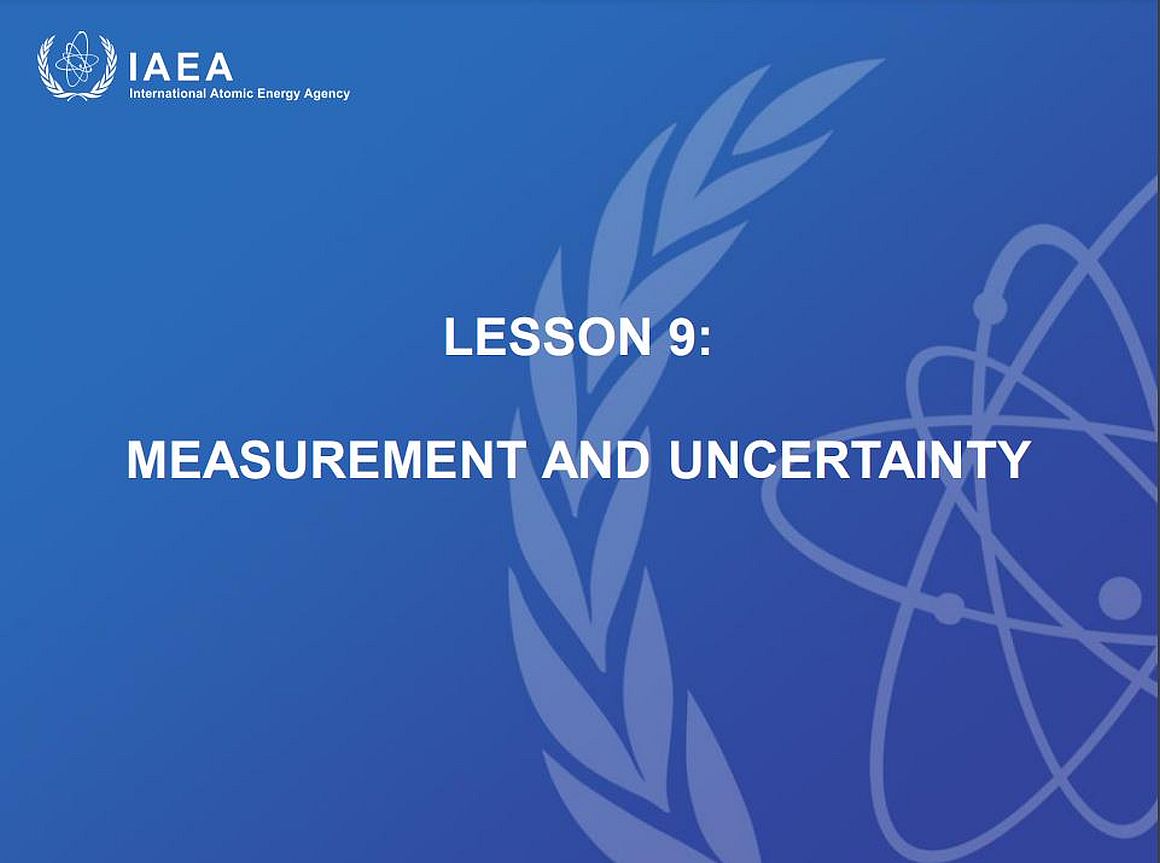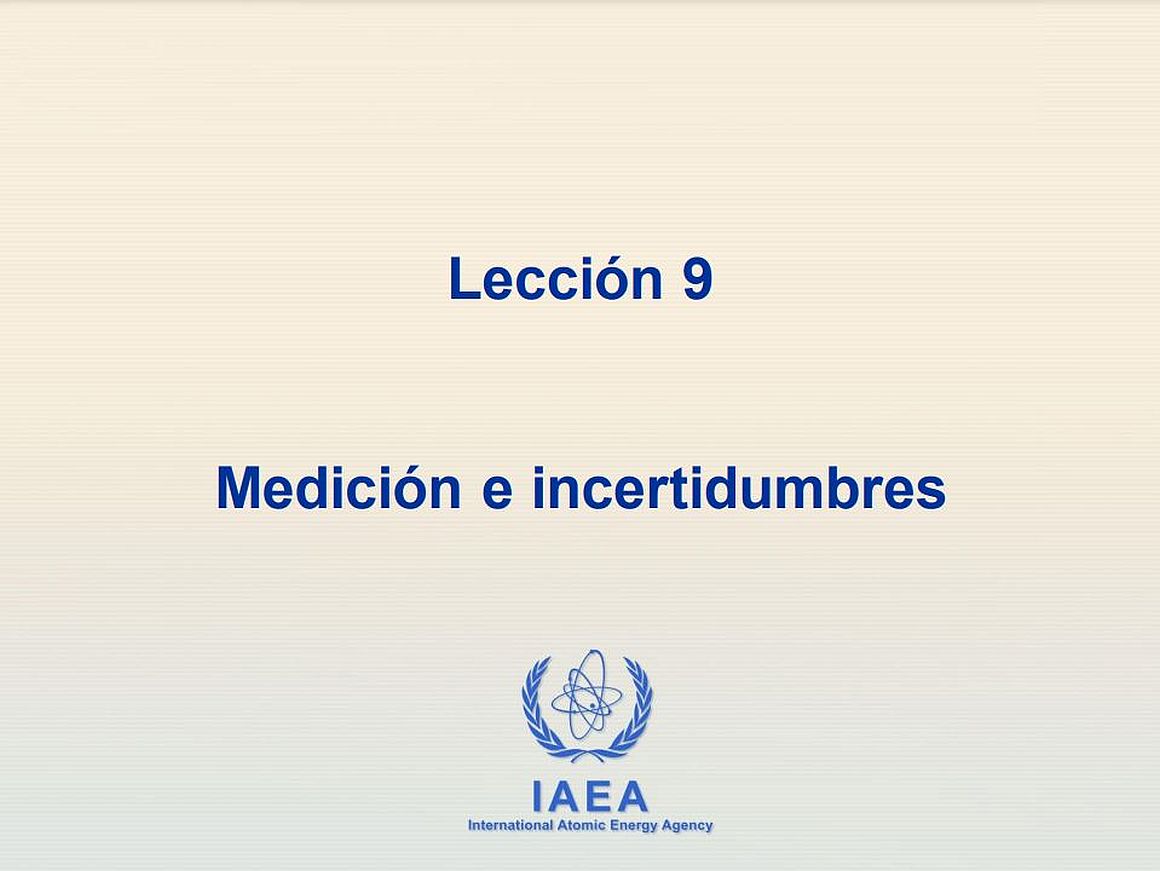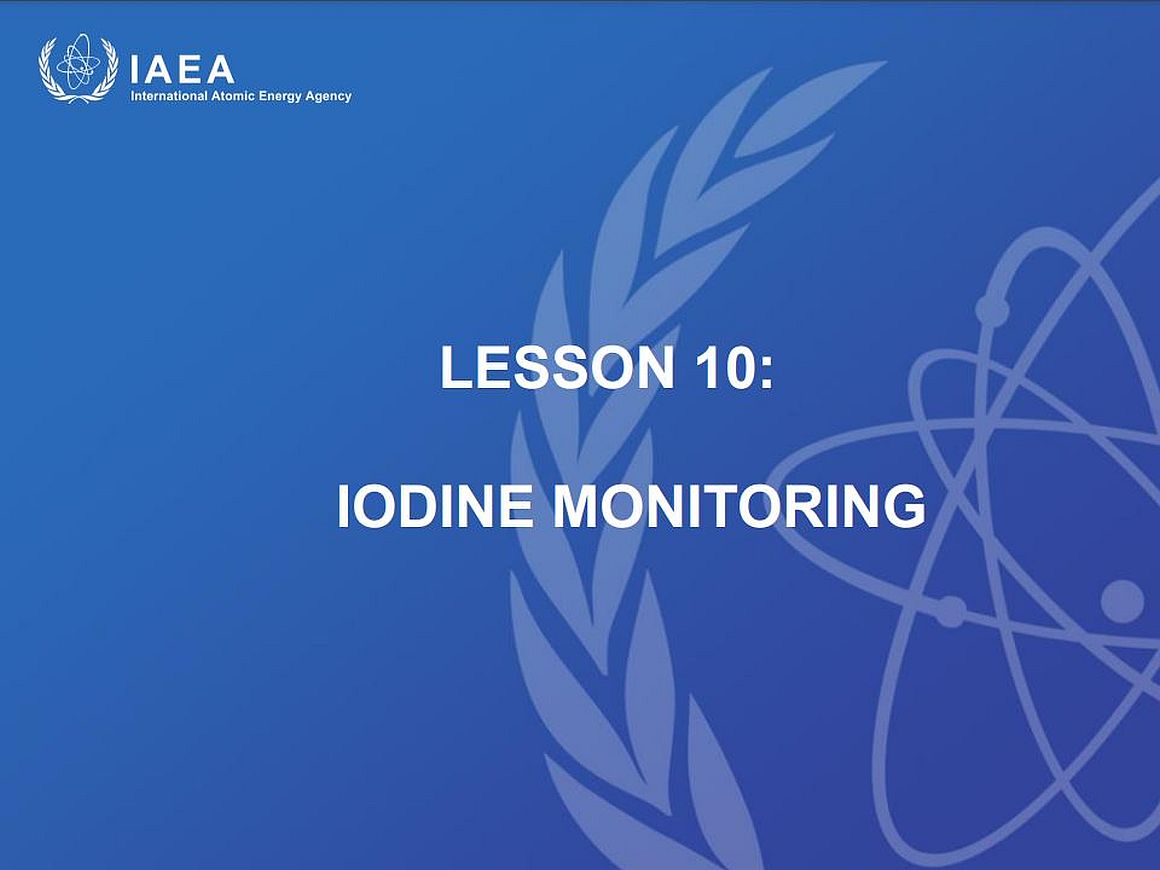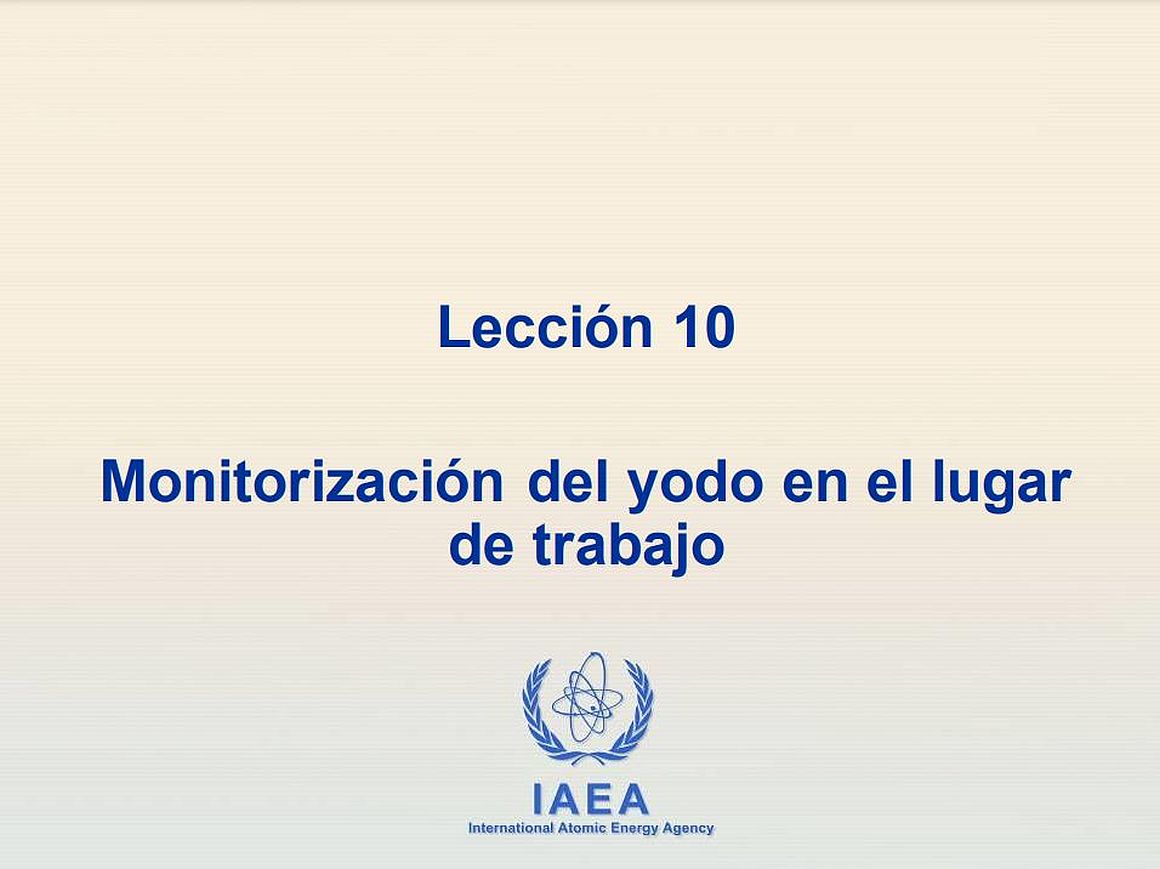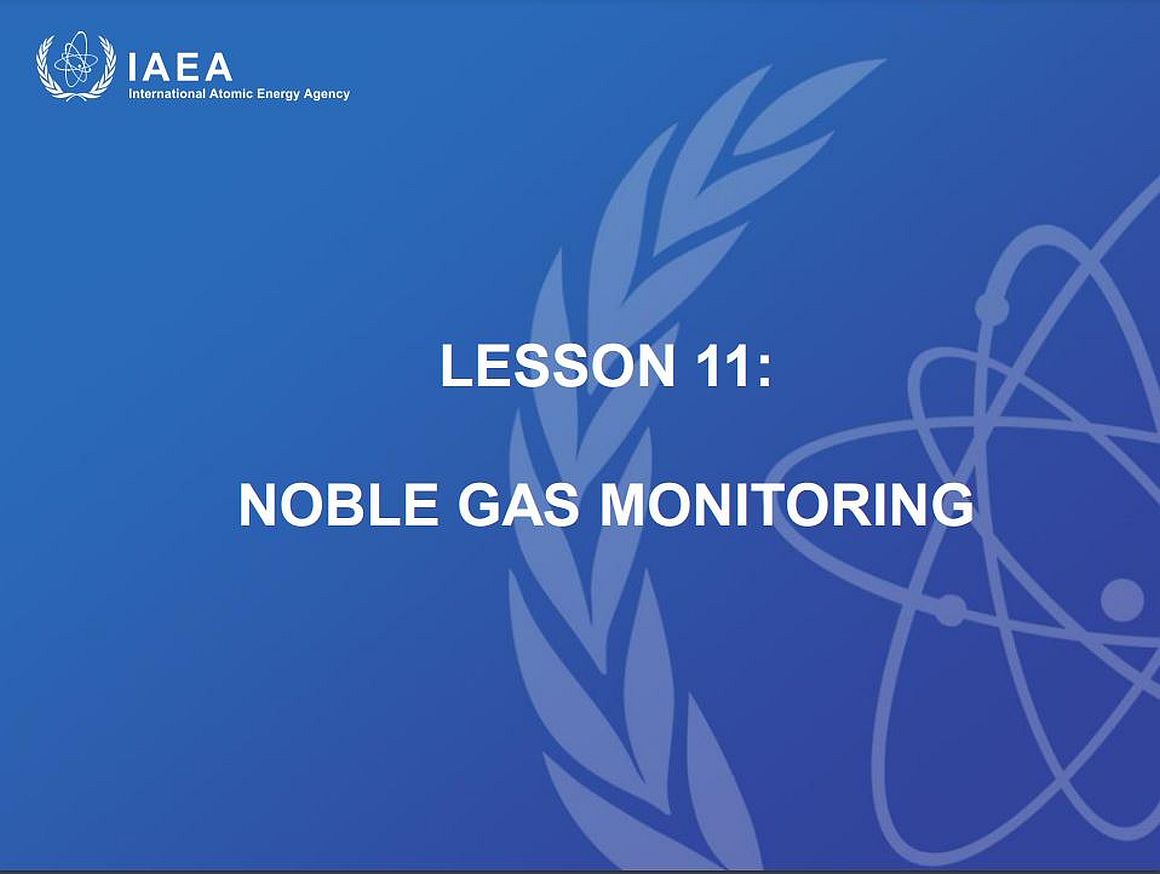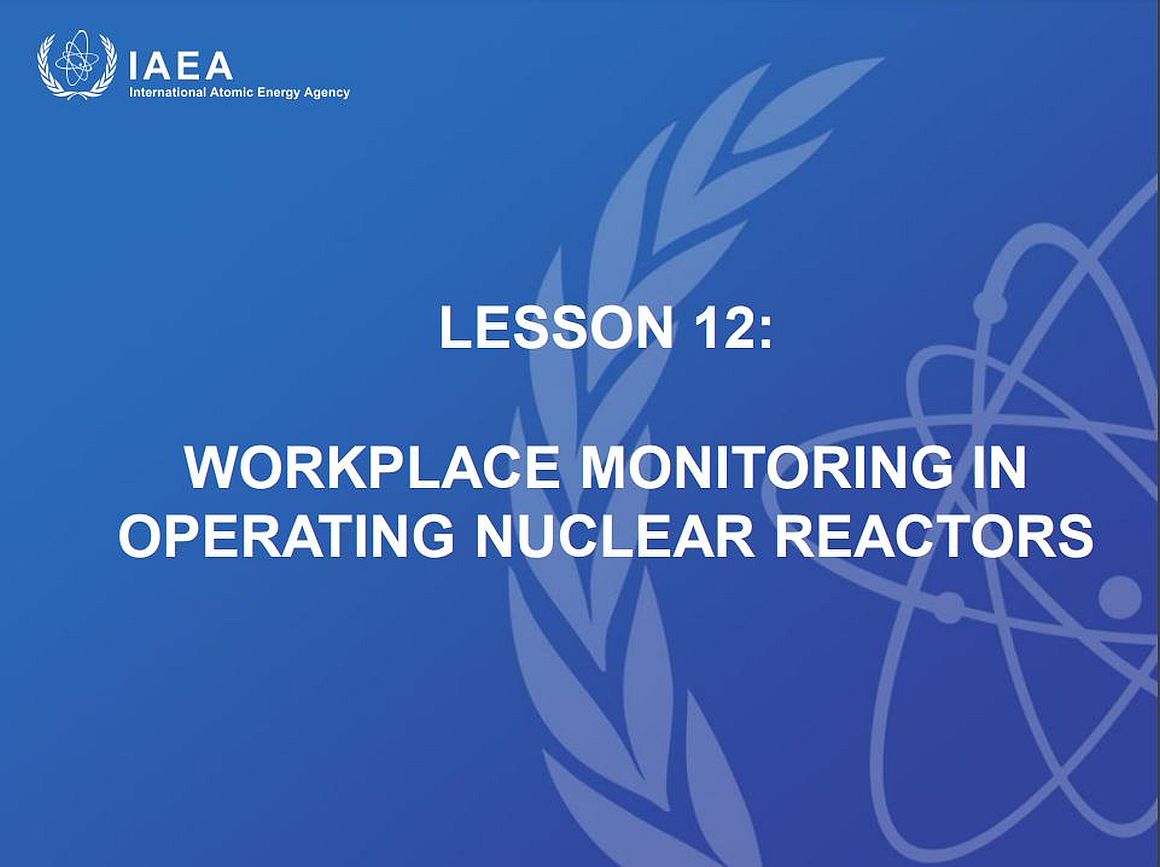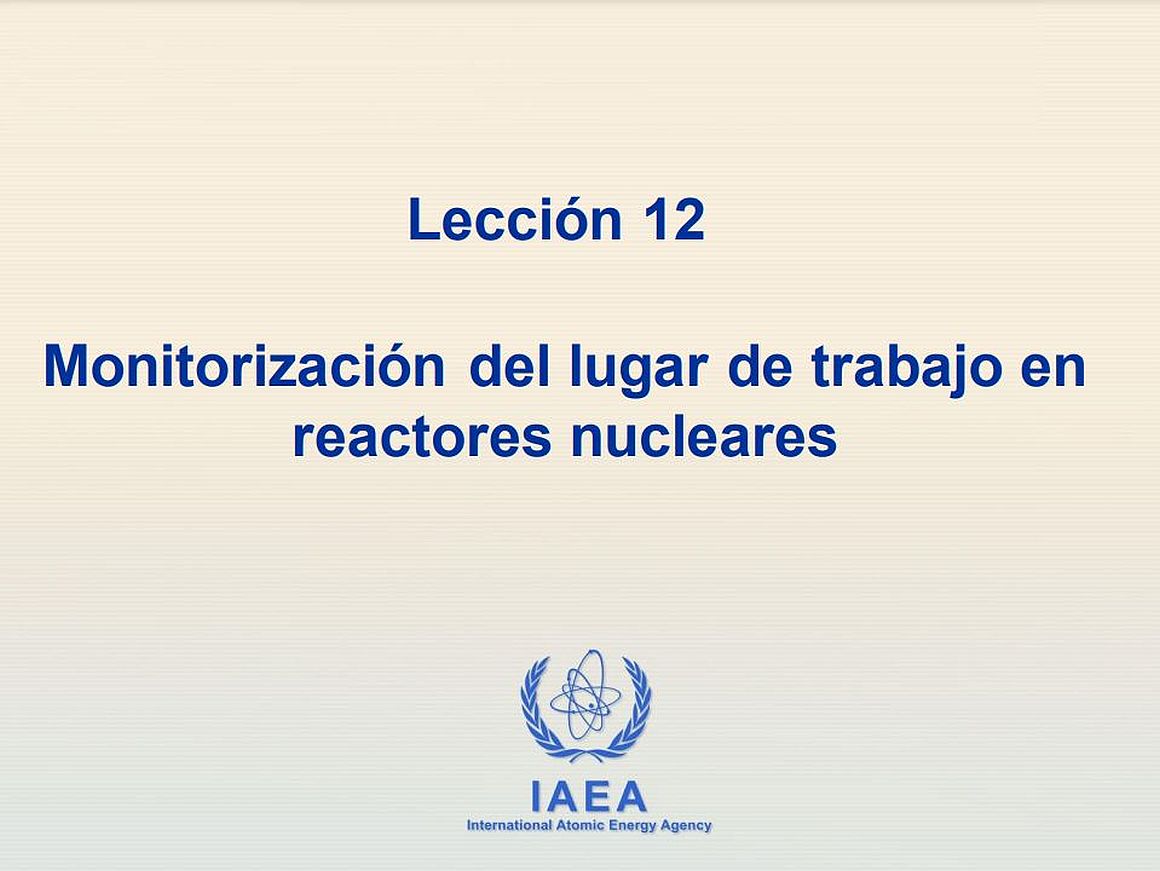Workplace Monitoring
The GSR Part 3 explicitly states that "Registrants and licensees, in cooperation with employers where appropriate, shall establish, maintain and keep under review a programme for workplace monitoring under the supervision of a radiation protection officer or qualified expert.". IAEA-developed training material on workplace monitoring based on GSG-7, which comprises measurements made in the working environment and the interpretation of such measurements, focusing on monitoring for external radiation, for air contamination and for surface contamination in accordance with the requirements of GSR Part 3. The training material is available for download in English and Spanish.
The training material, including twelve modules, is useful to employers, licensees and registrants; designated Radiation Protection Officers; to management bodies and their specialist advisers; and to health and safety committees concerned with radiation protection of workers. It may also be used by workers and their representatives to encourage safe working practices.
Approved training packages may be copied, distributed, displayed, incorporated in customized presentations and used for non-commercial use as long as the source of the material is referenced to the IAEA approved training package.
Lectures in English and Spanish
1) Fundamentals of Workplace Monitoring (Part 1)
- Background and Significance of Monitoring
- Techniques Applied for Monitoring
- Instruments Employed for Monitoring
- Demonstrating the Practical Use of Instruments and Interpretation of Results
- Calibration and Quality Considerations
2) Fundamentals of Workplace Monitoring (Part 2)
- Survey Instruments
- General Considerations for all Measurements
- Factors which will Influence Results
- Recording the Monitoring Results
- The Instrument Process
- Quality Assurance
3) X-ray and Gamma Radiation Monitoring
- Monitoring Technique
- Instruments
- Calibration and Testing
- Practical Measurements
4) Beta and Neutron Dose Rate Monitoring
- Purpose
- Technique
- Calibration and Measurement
- Practical Measurement
- Interpretation
- Instrument Characteristics
5) Surface Contamination Measurement
- Introduction
- Technique
- Instruments
- Calibration and Testing
- Practical Measurement
- Specific Emissions and Interpretation
6) Workplace Monitoring of Air Activity
- Designing the Air Activity monitorig Programme
- Airborne Particulate Monitoring Techniques and Equipment
- Type tests
- Calibration
- Verification
- Checking
7) Tritium and Carbon-14 Monitoring
- Background and Significance
- Techniques
- Real Time Measurements
- Estimation of Low Energy Beta Activity
8) Gamma and Alpha Spectrometry for Workplace Monitoring
- Objectives
- Need for Spectrometry Method of Analysis
- Introduction to Alpha and Gamma Spectrometry
- Alpha Spectrometry System
- Gamma Spectrometry System
9) Measurement and Uncertainty
- Introduction
- Measurements
- Uncertainty and Errors
- Standard Deviation and its Calculation
- Sources of Errors and Types of Errors
- Detection Limits and Minimum Detectable Activity
10) Iodine Monitoring
- Need for Iodine Monitoring
- Techniques
- Equipment for Delayed Measurement
- Equipment Used for Real Time Measurement
- Examples of Iodine Monitors
- Calibration and Verification
- Factors Influencing Results
11) Noble Gas Monitoring
- Techniques
- Equipment
- Examples of Noble Gas Monitors
- Calibration and Testing
- Factors Influencing Volumetric Activity
12) Workplace Monitoring in Operating Nuclear Reactors
- Impact of Reactor Type, Age and Plant State
- Fingerprinting
- Operating Reactor Monitoring and Challenges
- Specific Examples
- Does not address Nuclear Emergency Monitoring


